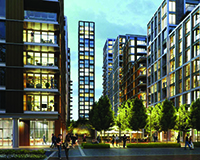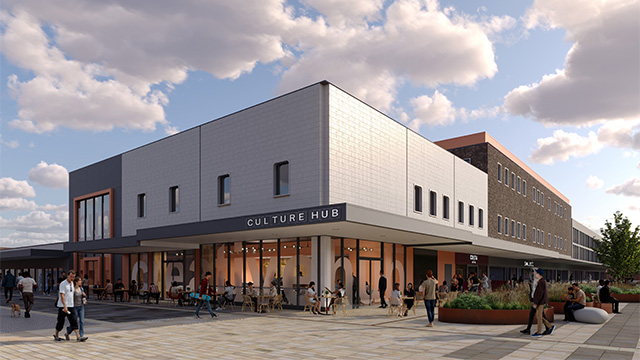
Good things come in small packages, or so the saying goes. In house-building right now this certainly seems to be the case.
Last week Berkeley Group was given the go-ahead to amend plans for its Prince of Wales Drive scheme in Battersea, SW8, to provide more and, on the whole, smaller homes.
 The former gasholder site, which is being built under the St William Homes brand, will now provide an extra 116 homes on top of the 839 originally approved in 2015.
The former gasholder site, which is being built under the St William Homes brand, will now provide an extra 116 homes on top of the 839 originally approved in 2015.
Other schemes, including 22 Hanover Square, W1, Battersea Power Station, SW8, and New Scotland Yard, SW1, have had similar changes to their unit mixes.
At Prince of Wales Drive, the new unit mix split will see an extra 116 one-bedroom and an extra 25 three-bedroom, but 25 fewer two-bedroom homes developed. The most significant changes are to the one and two-bedroom homes, which have seen a 10% increase and 12.5% decrease respectively.
The number of three-bedroom units has also increased, albeit to a lesser extent. Compared with the previous proposal on average the size of both one and two-bedroom homes has decreased, whereas three-beds have got bigger.
In short, Berkeley’s revised plans result in a more polarising unit mix, with more at either end of the size spectrum, and less in the middle than previously proposed. But why has London’s biggest housebuilder shaken up the mix?
In its planning documents at Prince of Wales Drive, Berkeley says the “reason for the revisions to the unit mix is largely in response to market conditions”.
It goes on to state that “it has become evident that larger units attract a narrow band of purchasers, therefore limiting their marketability and producing a slower sales rate that this is potentially detrimental to the viability, vibrancy and sustainable community the scheme is seeking to create”.
In granting consent, the assistant director of housing strategy and development at Wandsworth Council said that “larger family sized units in certain areas of the borough have had slower sales rates in recent years and this requires careful monitoring firstly to maintain development momentum and secondly too ensure that such changes in size mix do not adversely impact on the balance of unit sizes being delivered against planning policy”.
The slowdown in sales across prime central London over the past year is well documented. Uncertainty around foreign investor markets, geopolitical shocks and stamp duty changes have all taken their toll.
Initial findings from EG’s London Residential Research – released in full next week – reveal that across prime London in 2016, prices were down by 3.5% on 2015, with the average size of unit down by 4.3% on the previous year.










